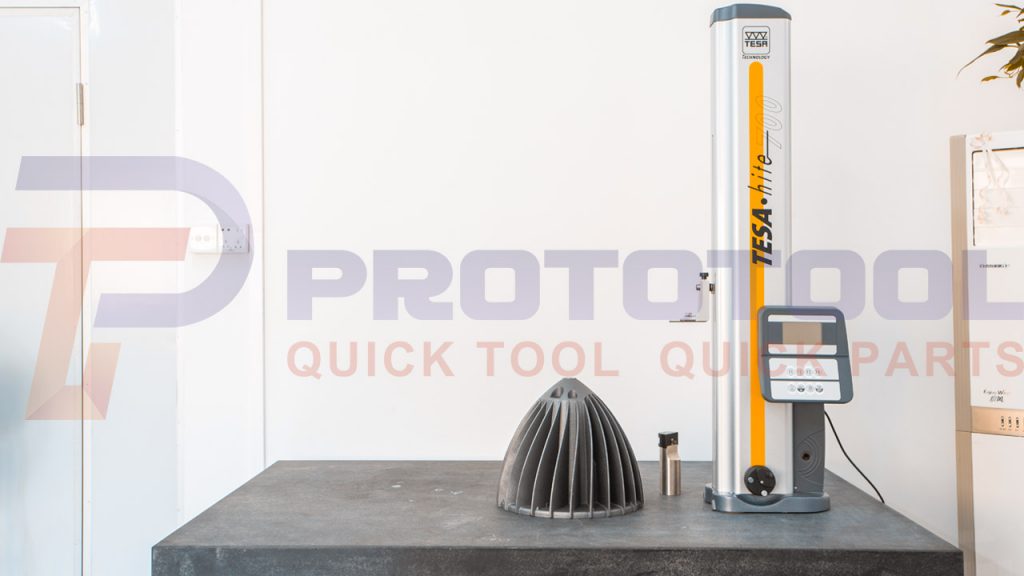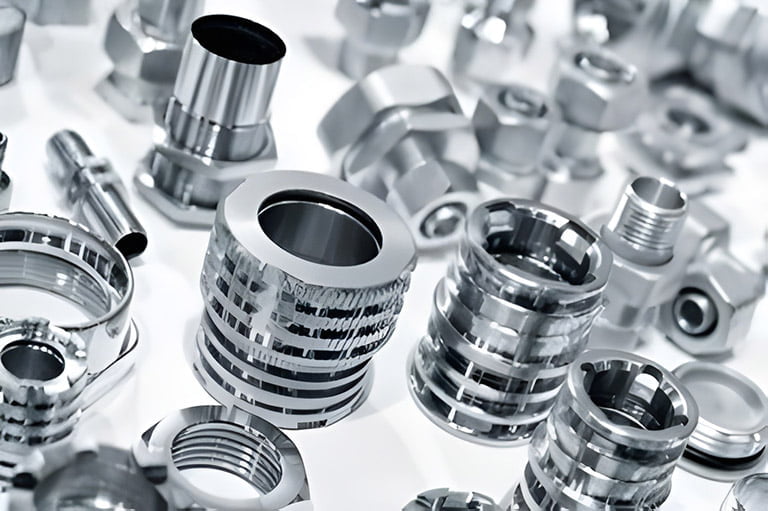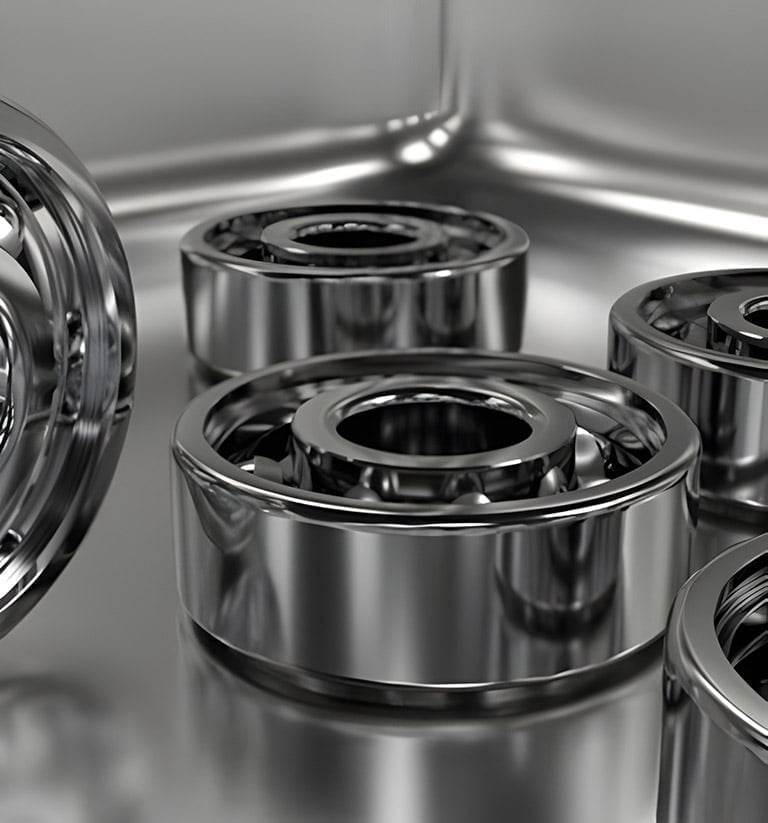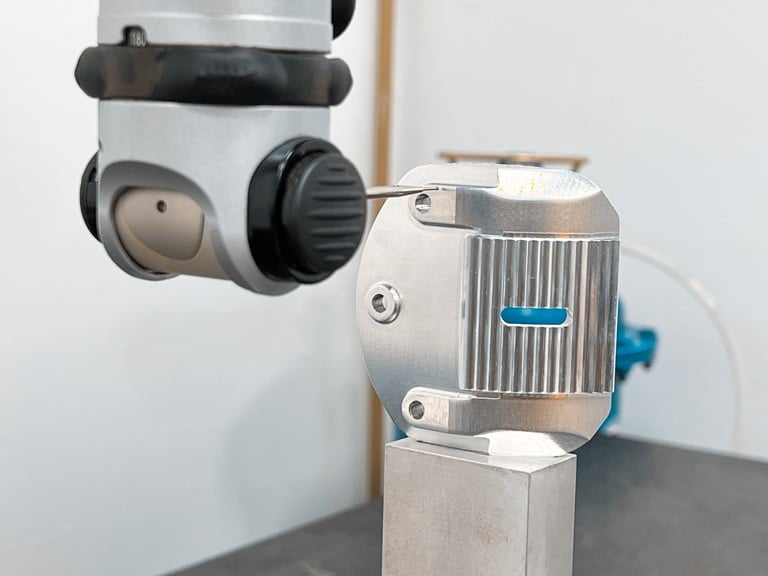A CNC or Computer Numerical Control is a machining method. In the CNC machining method, the CNC machining tolerances play a vital role in determining how the machine variables can be changed per different production demands. Typically, a Máquina CNC comprising computer programming and electromechanical devices automates metal and non-metal parts as per those parts’ automation and production demands. Additionally, these machines ideally conduct all the operations involved in the metal and non-metal products production/automation as per the program and its parameter tolerances to create a final and usable product.

Utilizando un Máquina CNC is common in today’s industrial and manufacturing industries. However, it’s crucial to understand the CNC machining tolerances standards and their practical usage to create ideal end products per the user’s demands. This guide will cover everything you need to know to understand CNC machining tolerances deeply.
Guide to CNC Machining Tolerances:
What are Machining Tolerances?
Machines and machining processes have become exceptionally accurate in the contemporary world. However, maintaining precise precision isn’t always possible for machines, even with great accuracy. Whether it be due to the machining process being used or various factors of the part material, like the size, etc., variances can prevent machines from maintaining a definite precision. Engineers, as a result, maintain the precision of the machining process and the result of the product by assigning machining tolerances standards to the machine parts during their design phase. The typical machining tolerances set on the machine parts ensure that the parts cannot process a product if it doesn’t meet the tolerance requirements. The same design infrastructure is utilized for the CNC machining tolerances.

Speaking of which, when it comes to fabricating components and parts, Mecanizado CNC has surpassed all others in terms of popularity. Today, the usage of these machines is widespread in all industries. Furthermore, due to technological advancements, these machines have significantly improved in several respects, including their ability to perform automated procedures, their level of precision, and their ability to achieve extremely close tolerances.
En length, width, heighty bend radius, among many other factors for most industrial applications, have a tolerance or acceptance range for the parts or components that must be machined or automated. This specific acceptance range allows the result of machined products to be precisely similar to their structural and usage demands, making them more efficient. Due to this specific reason, minimal variation in these parameters is tolerated when machining metal and non-metal parts, making machining tolerances or CNC machining tolerances highly essential for the efficient management of production and automation industries.
Why are CNC Machining Tolerances Important?
While standard tolerances are always present to handle machining for non-tolerance dimensions, having machining tolerance for different machine parts can be important in many ways. A few of the factors that make CNC machining tolerances necessary in both cases are:
Minimized Production Costs and Improved Turnaround Time:
When you provide a Mecanizado CNC tolerance to your trusted manufacturer, it can be easier for the manufacturer to get behind with the automation of the product immediately. In this situation, there is also no need to go through the CNC machining tolerances chart. With just the provided tolerances, your manufacturer can start the work as soon as they receive the product design and dimensional limitations per the product’s usage. As a result, the cost of production is automatically minimized while allowing you to receive the product in a limited time.
Limited Retooling Costs:
The thing about having specific CNC machining tolerances is that it helps limit errors and the need for retooling the automated products. Usually, manufacturers refuse to work on a product or part without receiving specific machining tolerance standards from the customer themselves. As a result, emphasizing the tolerances preferred by the customer for using a Máquina CNC helps reduce the reworking and retooling costs for the manufacturer and the customer. In addition, it saves time and ensures limited retooling on the product or part errors due to the processing of a part by engineers using the wrong tolerances.
Lengthy Processing Time Affecting the Customer’s Business:
Where provided CNC machining tolerance plays a massive role in making the entire process faster and budget-friendly for the customer, the absence of tolerances can do the opposite. When running a product designing or supplying business, it is essential to provide parts in less time, or at least at the time you further promise to deliver to your client/company.
In such situations, when you do not share CNC machining tolerance with the manufacturer/engineers, they tend to use a CNC machining tolerances chart with different tolerances values, which typically doesn’t work well with all kinds of the products’ machining process. Following the wrong tolerances means automation or machining a product with the wrong size, width, length, or any other parameter. In addition, the wrong parameters of a product affect its ability to fit in the shaft/machine during its usage.
It leads to the need for retooling the product, making the engineers go through the process from the beginning. And if there is no complete CNC machining tolerance chart that specifies the exact parameters of the product, it may repeat this retooling phase a few times. Not only does this exceed the budget of the product machining, but it also makes the production more time-taking, impacting the designer’s or supplier’s business índice de rotación.
Factores que influyen en las tolerancias de mecanizado:
¿Te has preguntado alguna vez por qué CNC machining tolerances difieren según los productos? Si machining tolerance standards existe, ¿por qué es esencial tener en cuenta la tolerancia de parámetros específicos durante cualquier producto metálico o no metálico? He aquí la respuesta: cada producto y sus propiedades son diferentes. Estas propiedades del producto afectan a sus exigencias de uso y a su eficacia, haciendo que la producción y el mecanizado vayan seguidos de una tolerancia diferente.

En consecuencia, el typical machining tolerances no funcionan de forma ideal para la fabricación y automatización de todos los productos. Del mismo modo, a la hora de determinar la tolerancia de un producto o pieza, debe tener en cuenta múltiples factores para crear una CNC machining tolerances chart. Algunos de los factores a tener en cuenta son los siguientes:
Materiales:
Cada Material CNC reaccionan de forma diferente bajo el estrés de la producción y la automatización. Algunos materiales son más fáciles de trabajar que otros más complicados. Lo que ayuda a diferenciar estos materiales y a elegir los más fáciles de trabajar son sus propiedades. Tener en cuenta las propiedades de los materiales que va a utilizar le ayudará a determinar mejor qué material debe utilizar para el mecanizado. Además, las propiedades del material, una vez que haya elegido un material en particular, también ayudan a determinar la estructura de comportamiento del material bajo tensión, lo que le permite hacer una lista de materiales prácticos y utilizables. machining tolerances standards en consecuencia.
Tipo de mecanizado:
Con un Máquina CNC avanzando con el tiempo, la estructura de trabajo y rendimiento ya no es básica y limitada a un tipo de mecanizado específico en esta máquina. En su lugar, Mecanizado CNC le permite elegir el método de mecanizado en función de la tolerancia de la pieza/producto acabado. Esto se debe a que algunos procesos implicados en el mecanizado son más procesos que otros, lo que repercute en las tolerancias de la pieza acabada para cada producto. Por lo tanto, también es esencial elegir el proceso de mecanizado adecuado según los requisitos y el producto final.
Fase de revestimiento y acabado:
Al crear el CNC machining tolerances chart para la pieza específica que necesita procesamiento, también debe tener en cuenta el proceso de chapado o acabado. Cualquier proceso de chapado o acabado por el que desee que pase el producto afectará a las dimensiones y la intolerancia del producto. Por lo tanto, es esencial tenerlos en cuenta de antemano para determinar cómo debe desarrollarse todo el proceso para obtener un resultado ideal. Sin embargo, lo que hace que el chapado y el acabado sean más importantes es la pequeña cantidad de materiales que añaden a la superficie de una pieza. Esta pequeña cantidad de materiales modifica aún más las dimensiones del producto final, haciéndolo diferente del resultado deseado si no se tiene en cuenta este proceso después de la producción.
Coste:
Por último, si todo va bien, lo último que no debe dejar de tener en cuenta al anotar el CNC machining tolerances para su producto es el coste. En pocas palabras, las tolerancias que establezca para el procesamiento del producto no deben ser demasiado estrictas. Las tolerancias más estrictas pueden llegar a ser difíciles de conseguir como mucho, pero también duplican sus gastos. La mejor manera de evitar este problema al ultimar las typical machining tolerances para su producto es ser preciso para excluir costes adicionales en una tolerancia más ajustada que quizá no se desee en primer lugar.

Conclusión
Formación sobre máquinas CNC y CNC machining tolerances standards antes de proceder a la automatización del producto puede ayudar mucho. No sólo puede juzgar y finalizar mejor servicios de fabricación fiables e ingenieros que saben lo que hay que hacer, sino que también se consigue un producto final que cumple sus requisitos de diseño y uso.
Preguntas más frecuentes (FAQ)
¿Cuáles son las tolerancias estándar de mecanizado?
Más a menudo de lo habitual, cuando las empresas de fabricación invierten en el mecanizado y la automatización de productos, le exigen que proporcione datos específicos. machining tolerances standards para proceder al mecanizado en consecuencia. Pero si no es el caso, la tolerancia estándar para el mecanizado, especialmente para Servicio de mecanizado CNCsuele ser de ±0,005 pulgadas (±0,127 mm). Aunque a simple vista no sea posible detectar esta ligera discrepancia, puede afectar a la forma en que encaja el producto acabado.











